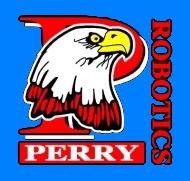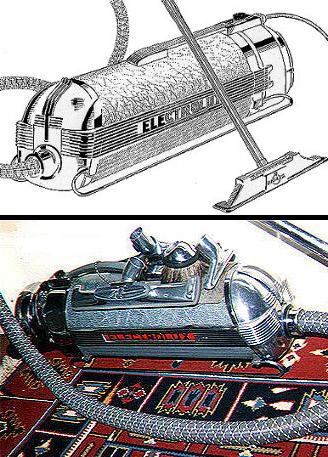
Team: 05-0002
 |
| The Past The past of household robotics is not as far ago as we may think. Until the 20th Century, mankind did not even believe that any machinery could replace the work of any human. All laundry had to be hand washed and all of the dishes had to be done by hand. Popular magazines and TV shows of the 1950's and 1960's always showed a human like robot doing common household chores. This dream of a life of lax and luxury while your robot cleaned, took out the trash, even cooked dinner has failed to materialize. However, in today’s society baby steps have been taken towards actual household robotics. When remembering the true meaning of household robotics, (a device that automatically performs complicated often repetitive tasks using mechanical components in any general public home)[9] the evolution of simple machinery that can make many tasks easier such as the microwave, the vacuum cleaner, and the dishwasher had early beginnings. Evolution in each of these fields has carved a pathway for household robotics. If one takes the example of the Roomba, it would have been extremely difficult to create a robotic broom. However, if in 1901 Hubert Cecil Booth had not created the first patented vacuum cleaner[10], then the Roomba would have been impossible to create. Although the machines below are not true robots they were baby steps in helping people with common chores. Before these devices were invented cleaing your floors and doing your dishes was pure drudgery. We may still think of these tasks as drudge work but that is simply because we overlook them in our daily lives. At the time of their invention they were real time savers and amazing to the people of the day.
The Dishwasher
Though this is not held as a “robot” in the regular
vocabulary, it is however a device that The Marriage of The Computer and The Appliance Household robotics never truly evolved until the present times, however, their primitive beginings are in our very own past. Household robotics did not advance any until the natural marriage of the computer with normal household appliances. Now we have devices that can mow our yards, vacuum our houses and a variety of other tasks. You can read more about the present capabilities of household robotics here.
|

 contains
mechanical components in order to carry out a sometime repetitive
task and most robots depend upon a computer. We rely on computers
every day, if it weren’t for them household robotics would
have never been possible. The beginnings of the computer were in
punch card processing and vacuum tubes. This technology, along with
the large variety of machines that created, sorted, collated, printed,
and reproduced punched cards, allowed organizations to efficiently
manage thousands, or even millions, of records. Following Herman
Hollerith's punched card equipment designed to process the 1890
US Census, the variety of punched card processing machines grew
rapidly.[15] By the mid-twentieth century, American, British and
German machines could multiply, divide and even calculate square
roots. Now that seems like a simple task, but back in the late 1800’s
it was quite an accomplishment.
contains
mechanical components in order to carry out a sometime repetitive
task and most robots depend upon a computer. We rely on computers
every day, if it weren’t for them household robotics would
have never been possible. The beginnings of the computer were in
punch card processing and vacuum tubes. This technology, along with
the large variety of machines that created, sorted, collated, printed,
and reproduced punched cards, allowed organizations to efficiently
manage thousands, or even millions, of records. Following Herman
Hollerith's punched card equipment designed to process the 1890
US Census, the variety of punched card processing machines grew
rapidly.[15] By the mid-twentieth century, American, British and
German machines could multiply, divide and even calculate square
roots. Now that seems like a simple task, but back in the late 1800’s
it was quite an accomplishment.